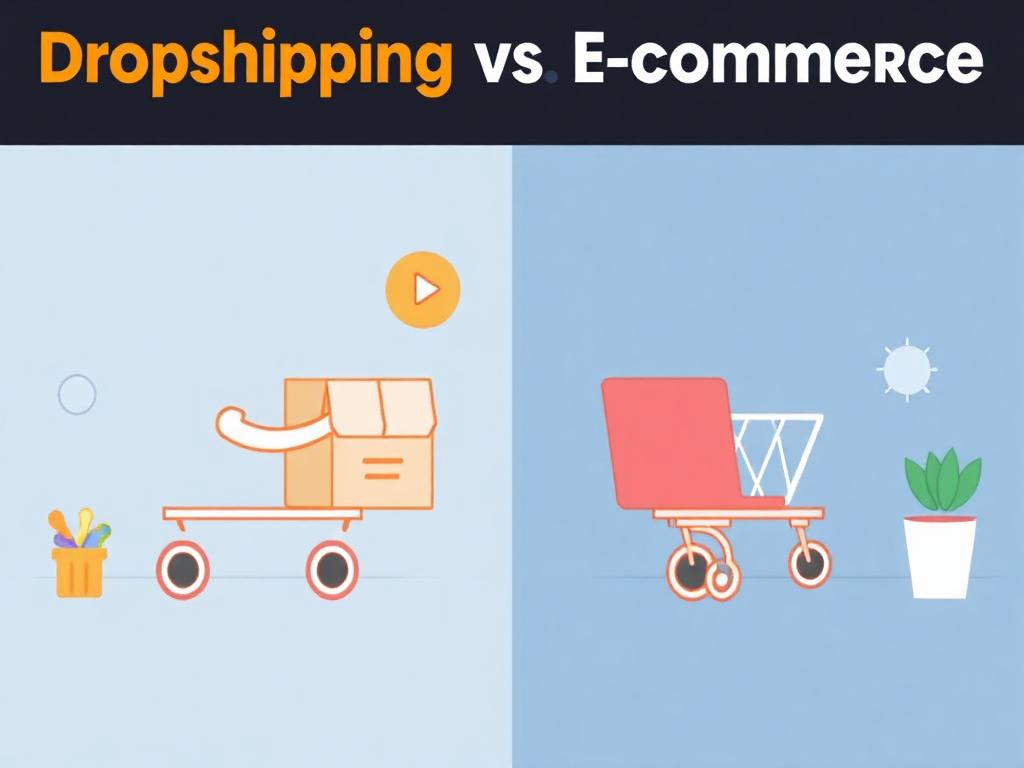When starting an online business, choosing the right business model is crucial for success. Two popular options are drop shipping and traditional ecommerce. Each model has its own set of costs and benefits that can significantly impact your business operations and profitability. In this blog post, we will explore the key differences between drop shipping and ecommerce, focusing on their costs and benefits to help you make an informed decision.
Understanding Drop shipping
What is Drop shipping?
Drop shipping is a retail fulfillment method where the retailer does not keep products in stock. Instead, when a customer makes a purchase, the retailer purchases the item from a third-party supplier who ships it directly to the customer. This means the retailer never handles the product directly.
Costs of Drop shipping
- Product Costs: Retailers pay the supplier’s price for each product sold, which is typically higher than wholesale prices due to the lack of bulk purchasing.
- Shipping Fees: While the supplier handles shipping, retailers may incur additional shipping costs, especially if they offer free shipping to customers.
- Platform Fees: Many drop shipping businesses operate through ecommerce platforms (like Shopify or Woo Commerce), which charge monthly fees and transaction fees.
- Marketing Costs: As with any business, marketing is essential for attracting customers, and these costs can vary widely depending on the strategies used.
Check Out: Drop shipping vs Ecommerce
Benefits of Drop shipping
- Low Startup Costs: Since there’s no need to invest in inventory upfront, drop shipping requires a lower initial investment compared to traditional ecommerce.
- No Inventory Management: Retailers do not need to manage inventory, reducing the complexity of operations and overhead costs.
- Flexibility: Drop shipping allows for a wide range of products to be offered without the risk of unsold inventory, making it easier to test new products.
- Location Independence: Retailers can run their drop shipping business from anywhere with an internet connection, providing flexibility in terms of location.
Understanding Traditional Ecommerce
What is Traditional Ecommerce?
Traditional ecommerce involves selling products directly to consumers through an online store. In this model, businesses purchase inventory upfront, manage stock levels, and handle shipping and fulfillment either in-house or through third-party logistics providers.
Costs of Traditional Ecommerce
- Inventory Costs: Businesses must invest in inventory upfront, which can require significant capital, especially for larger product ranges.
- Storage Costs: If inventory is stored in a warehouse or retail space, businesses incur costs related to storage, including rent, utilities, and insurance.
- Shipping and Fulfillment Costs: Businesses are responsible for shipping products to customers, which can include packaging, shipping fees, and labor costs.
- Platform Fees: Similar to drop shipping, traditional ecommerce businesses may also incur fees from ecommerce platforms, payment processors, and website hosting.
Benefits of Traditional Ecommerce
- Higher Profit Margins: By purchasing products in bulk, businesses can negotiate better prices, leading to higher profit margins compared to drop shipping.
- Quality Control: Businesses have direct control over product quality, packaging, and shipping, which can enhance customer satisfaction and brand reputation.
- Branding Opportunities: Traditional ecommerce allows for more robust branding and marketing strategies, enabling businesses to create a unique identity and customer experience.
- Customer Loyalty: With a strong brand presence and quality control, businesses can foster customer loyalty and encourage repeat purchases.
Comparing Costs and Benefits
1. Startup Costs:
- Drop shipping: Lower startup costs due to no inventory investment.
- Traditional Ecommerce: Higher startup costs due to inventory purchases.
2. Operational Complexity:
- Drop shipping: Simpler operations with no inventory management.
- Traditional Ecommerce: More complex operations requiring inventory management and fulfillment.
3. Profit Margins:
- Drop shipping: Typically lower profit margins due to higher product costs and competition.
- Traditional Ecommerce: Generally higher profit margins due to bulk purchasing and better pricing strategies.
4. Control Over Quality:
- Drop shipping: Limited control over product quality and shipping times.
- Traditional Ecommerce: Greater control over product quality and customer experience.
5. Flexibility:
- Drop shipping: High flexibility in product offerings and location independence.
- Traditional Ecommerce: Less flexibility due to inventory commitments and operational logistics.
6. Customer Relationships:
- Drop shipping: May struggle to build strong customer relationships due to reliance on third-party suppliers.
- Traditional Ecommerce: Better opportunities to build customer loyalty through quality control and branding.
